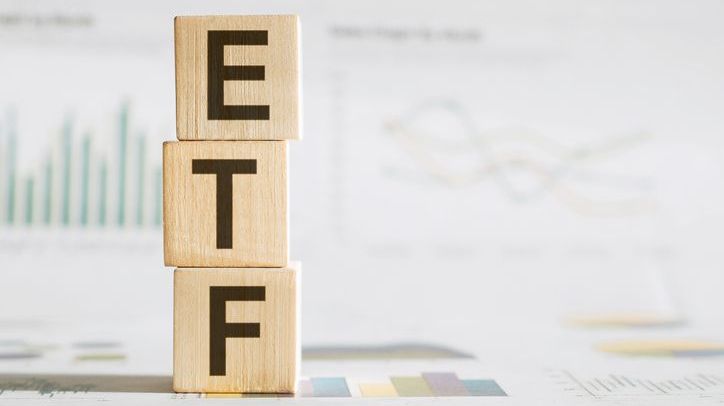Investing in commodities can be complex, particularly when it comes to metals like copper that play a pivotal role in various industries. Copper ETFs can allow you to gain exposure to the prices of the precious metal without the challenges of handling it directly. These ETFs can be an attractive option to diversify your portfolio, as you could speculate or hedge against the economic cycles that affect copper prices.
A financial advisor can help you evaluate and select investments for your portfolio, including commodities like copper. Find a fiduciary advisor today.
What Is a Copper ETF?
Exchange-traded funds (ETFs) are investment funds that are traded on stock exchanges, much like stocks. A copper ETF specifically focuses on tracking the price of copper, a base metal that is used across various economic sectors. These ETFs provide a way for investors to gain exposure to copper prices without the need to physically own or store the metal.
Copper ETFs may invest directly in physical copper or in copper futures contracts, depending on the structure of the fund. This unique blend of commodity investment and stock market flexibility makes copper ETFs an appealing option for both seasoned and novice investors looking to diversify their portfolios.
Copper is indispensable in modern industry and technology, making it a highly valued commodity on the global market. Copper is essential in the production of electrical wiring, plumbing and roofing, and it’s widely used in electronics, including circuit boards and computer chips.
Historically, the price of copper has shown a correlation with global economic growth, rising during periods of strong industrial demand.
Physically Backed ETFs vs. Futures-Based ETFs

Physically backed copper ETFs provide investors with a tangible assurance, as these funds hold real copper metal in secure storage facilities. This physical possession incurs additional costs, such as insurance, security and storage logistics, which can impact the overall valuation of the ETF.
The presence of actual copper supports the ETF’s price closely mirroring the physical copper market’s dynamics, making it less susceptible to the immediate whims of financial markets. Investors inclined toward physically backed copper ETFs may prefer investments that can potentially hedge against inflation and currency devaluation, considering the tangible nature of the asset.
Conversely, futures-based copper ETFs focus on futures contracts rather than physical copper. These ETFs offer a more flexible and less capital-intensive investment option. By investing in futures contracts, these ETFs speculate on the price of copper without the need for physical storage, thereby reducing the overhead costs associated with physically backed ETFs.
However, the reliance on futures contracts introduces a higher degree of volatility and risk, as prices can fluctuate significantly due to factors like economic indicators, geopolitical tensions and market demand.
This structure might appeal to investors looking for exposure to copper prices but are also willing to navigate the complexities of futures markets. It’s important to understand that while there is a potential for higher returns, this comes with increased risk, making futures-based ETFs suitable for more experienced investors or those with a higher risk tolerance.
Pros and Cons of Investing in Copper ETFs
The allure of copper ETFs lies in the potential for price appreciation driven by sustained market demand. However, they also carry the inherent disadvantage of price volatility, which can be significantly influenced by global economic factors such as trade policies and currency fluctuations.
Pros of Copper ETFs
- Market demand: Copper is essential in a variety of sectors including construction, electronics and power generation. This continuous need can lead to potential price increases.
- Convenience: Copper ETFs offer a simpler alternative to purchasing physical copper. Like trading stocks, investors can buy and sell shares easily through a brokerage account.
- Inflation hedge: Commodities like copper can serve as a hedge against inflation. As prices for goods increase, the value of copper typically rises as well.
Cons of Copper ETFs
- Price volatility: The price of copper can be highly volatile, because it’s influenced by global economic conditions, trade policies and currency fluctuations. This can create significant swings in the price of copper, impacting the ETF’s value.
- No physical ownership: Unlike owning physical copper, investing in a copper ETF does not grant ownership of the actual metal. This can be a disadvantage when demand for physical assets spikes.
- Market factors: Copper prices are also affected by mining disruptions, changes in regulatory policies and shifts in economic growth, especially in top copper-consuming countries like China. These factors can negatively impact ETF performance.
Examples of Copper ETFs

Each copper ETF fund has its own unique approach to distinct market segments. These ETFs vary in terms of underlying assets, investment strategies and performance metrics, yet they all share a common focus on the copper industry.
iShares Copper and Metals Mining ETF
The iShares Copper and Metals Mining ETF is designed to offer investors exposure to the copper mining sector. This ETF tracks the investment results of the STOXX Global Copper and Metals Mining Index. To do this, the fund invests in 35 companies involved in the extraction and production of copper, as well as cash and derivatives.
United States Copper Index Fund
The United States Copper Index Fund offers a direct approach to investing in the copper market through futures contracts. This ETF is structured to track the movements of copper prices, utilizing a selection of futures contracts that best represent the market’s dynamics. The fund’s management takes into account various factors, including regulatory requirements from the Commodity Futures Trading Commission (CFTC) and the inherent liquidity and volatility of the copper market.
Global X Copper Miners ETF
The Global X Copper Miners ETF focuses on tracking the Solactive Global Copper Miners Total Return Index. This ETF includes a diverse array of copper mining companies from various geographical regions such as North America, Australia and South America, offering broad exposure to the global copper mining industry. The fund’s 40 holdings include major mining entities like Freeport-McMoRan and Glencore, known for their substantial copper outputs. The fund’s performance is closely tied to the operational success and expansion of these mining companies, providing an investment avenue that benefits from the global scale and economic impact of copper mining activities.
Gold vs. Copper: Which ETFs Are Better?
Both gold and copper directly influence the behavior of their respective ETFs.
Gold is traditionally seen as a safe-haven asset, attracting investors during times of economic uncertainty due to its ability to retain value. Consequently, gold ETFs tend to exhibit less volatility compared to other investment vehicles, providing a more stable investment option during turbulent market conditions.
Conversely, copper’s role as a fundamental material in construction and electrical applications ties its demand and price to the health of the global economy. This makes copper ETFs more volatile, as they are susceptible to economic cycles. For instance, during an economic upturn, copper prices and the value of copper ETFs may increase significantly due to heightened industrial demand.
For conservative investors who prioritize capital preservation and stability, gold ETFs are typically more appealing. Their lower volatility and defensive nature help safeguard an investor’s capital during downturns in the broader market. In contrast, more aggressive investors, who seek higher returns and are willing to tolerate greater risks, might find copper ETFs more attractive. These ETFs can offer substantial gains in a bullish economic environment where industrial demand for copper is high.
Historical performance during various economic conditions, such as the 2008 financial crisis or the post-2020 recovery, shows that gold ETFs have historically shown resilience around market downturns, while copper ETFs can generate significant returns during economic expansions.
Bottom Line
Copper ETFs offer exposure to the copper market through both physically-backed and futures-based ETFs. These financial instruments cater to a range of investor needs, from those seeking tangible assets to hedge against economic instability, to those looking for speculative opportunities tied to market dynamics. While copper’s essential role in many industries underpins its demand, the volatility driven by global economic conditions and market speculation cannot be overlooked.
Portfolio Management Tips
- Tax-loss harvesting is a useful tax planning strategy that can reduce or eliminate what you owe when you sell an investment for a profit. You can even use short-term losses to offset long-term gains but only after you’ve offset any short-term gains that you have.
- A financial advisor can help you figure out how to invest your money and then manage your portfolio for you. Finding a financial advisor doesn’t have to be hard. SmartAsset’s free tool matches you with up to three vetted financial advisors who serve your area, and you can have a free introductory call with your advisor matches to decide which one you feel is right for you. If you’re ready to find an advisor who can help you achieve your financial goals, get started now.
Photo credit: ©iStock.com/Alexandr Vorontsov, ©iStock.com/Nastassia Samal, ©iStock.com/Szepy
